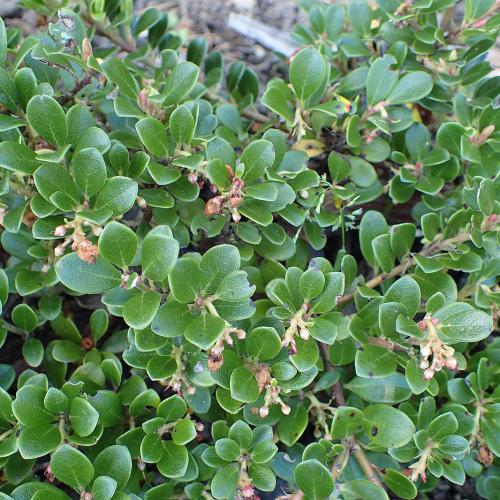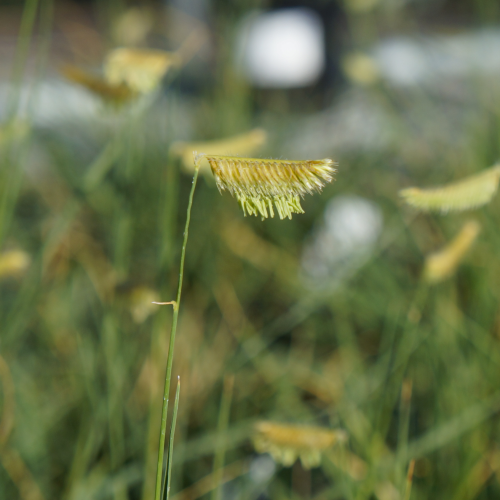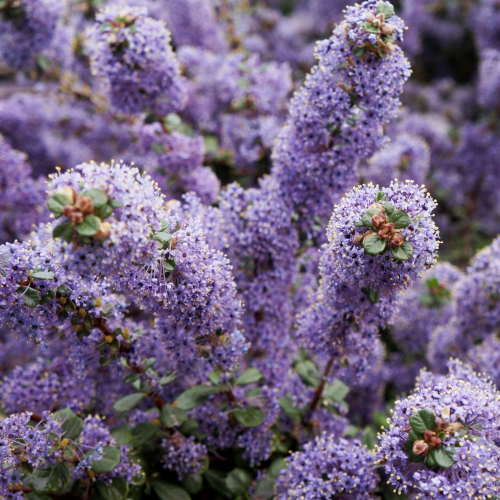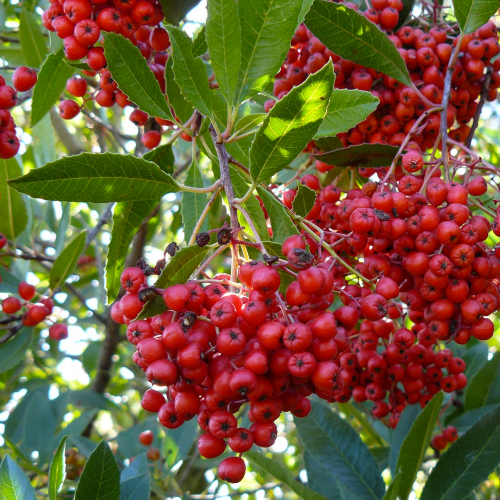
Building Blocks for Resilient Gardens
Plant Sales at the Arboretum and Public Garden, hosted by our Friends support group, have proven to be an excellent resource for community members to build sustainable landscapes at home. We offer a steady supply of garden gems, from California natives to drought tolerant selections, and a medley of pollinator plants. These staple species are cornerstones of sustainable local gardens.
As the Friends celebrate 50 years of growing better together and also look to the future, we want to broaden our scope to support landscapes that are not just sustainable, but also resilient. In the face of growing environmental challenges, habitat resiliency presents itself as a vital but achievable goal. Recent studies have shown that habitats impacted by wildfires bounce back more quickly when the area’s pre-fire community shows a rich variety of species.
How can we help our urban landscapes support biodiversity and bounce back from human impact? Consider using plants in your home garden that have proven to be resilient in our climate and in our Arboretum and Public Garden landscapes!
As the Arboretum and Public Garden collections have grown and evolved, our team has observed an array of species interactions that take place in a healthy, resilient garden. We use plants as building blocks for biodiversity. Starting from the ground up, our annual native wildflowers are a beautiful filler between plantings and function as a living mulch. They provide food for pollinators and hunting grounds for spiders. When the flowers are done blooming, the plants support the soil as a green mulch and set seeds that will bloom the following year.
Starting from the ground up, here are some examples of plants we frequently recommend that contribute to a more resilient garden:

|
Annual native wildflowers are a beautiful filler between plantings and function as a living mulch. They provide food for pollinators and hunting grounds for spiders. When the flowers are done blooming, the plants support the soil as a green mulch and set seeds that will bloom the following year. |

|
Arctostaphylos ‘Emerald Carpet’ is a dense evergreen groundcover that blooms in the winter and the flowers provide food for hummingbirds, bees and butterflies. The fruit are valuable food to wildlife like songbirds, turkeys and small mammals. |

|
Bouteloua 'Blonde Ambition' is a semi deciduous grass that is a host plant for skipper butterflies and provides shelter for other insects and spiders. |

|
Yarrow (Achillea millefolium) flowers supply food for pollinators and other beneficial insects. It is also a medicinal plant with antimicrobial components that benefits birds when they use it to line their nests. This behavior is a clever way birds can increase chick survivorship. |

|
Ceanothus ‘Valley Violet’ is a small dense evergreen shrub that supports quail nesting and provides cover for other wildlife. This plant’s early season flowers supply nectar and pollen to bumble bees, hover flies and honeybees. The seeds attract bushtits, mockingbirds, quail and finches. Ceanothus also have underground nodules that fix nitrogen, making essential nutrients available for surrounding plants. |

|
Toyon (Heteromeles arbutifolia), a large evergreen shrub, provides shelter for birds, mammals and invertebrates. Its plentiful flowers support pollinators and other beneficial insects with nectar and pollen. Toyon flowers mature into bright red fruit by mid-Fall and provide a feast for birds and small mammals through early spring. |
Building resiliency in gardens not only supports biodiversity in our neighborhoods and cities, but also fights the desertification of our local climate. We want to support urban communities by equipping them with the tools to build and sustain species-rich landscapes. Together, we can transform gardens across our region into landscape corridors that ameliorate climate degradation, revitalize our neighborhoods, and ensure a biodiverse future for our community.
